How To Maintain Garden Tools – Necessary Tips in 2024
Gardening is such a calming hobby to have. Not only do you get to bring beauty to the world but you also get to have products that you can use at your home. There are different garden tools that you use for gardening like pruning shears, shovels, and many more. All these tools need proper care and maintenance. I’m going to give you a detailed guide on how to maintain garden tools.
Caring for your tools will give them a long life and also make them look great. There are different ways to take care of your tools to make sure they stay in tip-top shape. Whether you have needful grass shears, prime soaker hoses or any other garden tools. This guide will help you. Read on to find more details.
How to Clean Garden Tools
One of the must-haves when it comes to maintaining garden tools is proper cleaning. Cleaning the tools will ensure they don't have rust and this way can last longer. Cleaning and oiling your tools regularly will keep them stronger and sharper, ensuring a longer life. Let us look into different tools and how you can clean them.
How to Maintain a Shovel
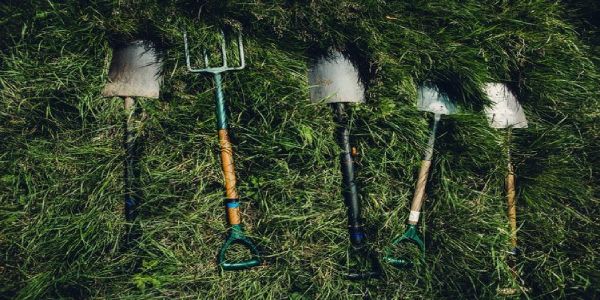
These are the tools you will need to clean a shovel
Cleaning supplies; garden hose, sponge or old cloth, sprayer, and detergent
Cleaning tools; steel wool, wire or scrub brush
Sandpaper; made out of 80 and 120 grit. It is great for use on wood and metal
Lubricating oil; you can use boiled linseed oil, motor oil, tung oil, cooking, or lamp oil. The best choice to use is the boiled linseed and tung oil but you can use whatever you have handy for lubricating
Safety equipment; to protect yourself you can get gloves, goggles to protect your eyes, and a dust mask.
How to clean
For cleaning, give your shovel a good scrub. Use detergent and a bit of water. Make sure you don’t use a lot of water to avoid rust. Dampen your cleaning tools to avoid using water on it. This will help to remove dirt and grit from the handles. You can use a regular scrub brush or steel wool to remove the mud from the shovel. Dry the shovel with some old towels, old clothes. Set the shovel aside and let it dry overnight. Make sure to put it in a dry place so that it doesn’t trap any moisture.
Remove rust
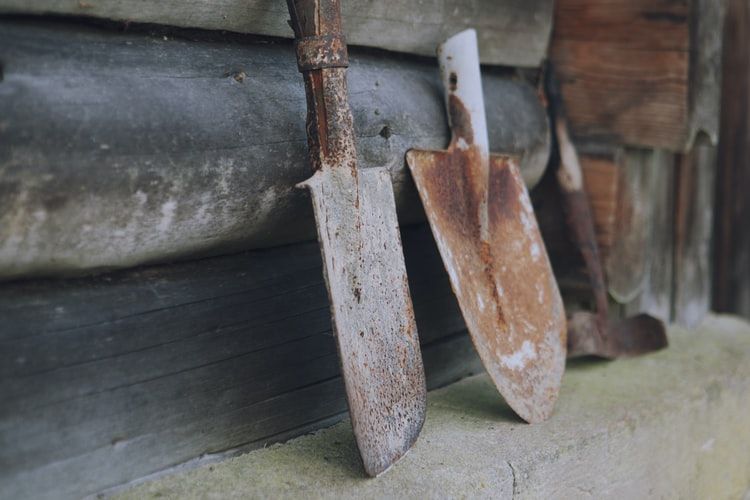
Once the shovel is dry, the next step is to remove the rust. You can now use your steel wire or brush or scrub to scrub away the rust that accumulated on the metallic parts. You can use a rotary wire brush attachment to make things easier since you won't have to use your strength. You need to make sure you use little grinding or scraping when removing the rust. This will ensure that your shovel doesn't thin or get weaker as time passes.
Sanding the shovel
Unless you have full stainless steel shovels, you will not want to skip this process. Wooden handles tend to age ungracefully. They can get chipped or rough and that is why the sanding process is necessary. You can use grit sandpaper to smooth the splinters and any deteriorated finish. You can also use the sandpaper to remove the remaining rust from crevices. This will further polish the metal areas. To finish it off, wipe it thoroughly to remove the wood and metal dust.
Sharpening a Shovel
For proper tool maintenance, you will need to sharpen them. Tools you will require are;
Sharpening tools; fine metal file together with a sharpening stone
Safety equipment; gloves, goggles, dust mask
Use the metal file to sharpen the edges of your shovel. Do not use a lot of strength to file it as you might grind away some of the metal. Do it smoothly to get a clean edge, remove burrs, and smooth out any chips. You can then use the sharpening stone to get a finer edge. Lubricate the stone before using it for sharpening.
Oiling
The last step to your shovel maintenance is to oil it. Use a clean rug or old clothes or towels to apply the lubricating oil. Apply the oil to both the handle and the metal areas. Wipe off the excess from the surface. The oil works to prevent the formation of rust, it also conditions the wood so that it does not absorb water and prevents cracking. Apply a second coat once the handle has dried, especially if the handle is made of wool.
If you have tools made of fiberglass or a composite handle only require a good cleaning, no oiling required. You can choose to sand the wooden handles and apply a new coat of finish, like varnish. If you choose to do this, make sure the wooden part is dry first.
Preventive Maintenance
I know you would like to keep your tools clean after washing and these are some steps you can take to ensure it stays that way. These steps are;
Rinse off any mud or soil with running water. Leaving the shovel with wet mud is the number one cause of rust and you will want to avoid that.
If the soil doesn’t come out, use a scrub brush to remove any stubborn soil. You can also use paint thinner for removing sap and pitch.
Once you remove the mud and oil wipe the shovel down using a cloth or towel. You can decide to let it dry in the sun
Hang the tools up. This is better than letting them stand on their edges
Wipe a coat of oil or spray with a penetrating oil regularly. Another alternative is to put the shovel in a sand bucket to make sure it stays clean and sharp.
How to Maintain a Hand Trowel
A hand trowel is like a small shovel. Maintaining it also requires cleaning, sharpening, and proper storage.
Cleaning
You will need; A) Bucket of water B) Old cloth C) Sand and D) Oil
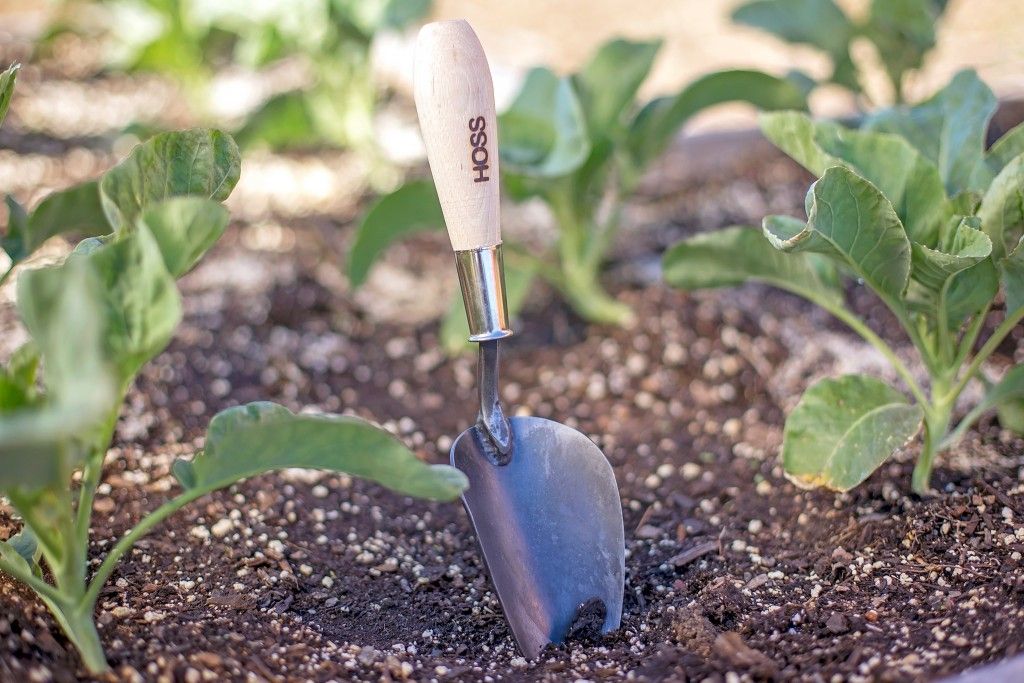
Dip the trowel in the bucket of water to loosen the dirt. Wipe the trowel off with the old cloth. You can also use the cloth to wipe light dirt on the handle. Use a brush to scrape stubborn dirt. You can also use it to remove rust spots on the blade.
Once you are done cleaning the next step is to oil it. Use oil that doesn't have petroleum oil. Coat the handle if it is made of wood to preserve it and protect it from water. Fill a bucket with oil and sand. Move the trowel's blade in the sand a few times to remove small pieces of dirt and coat the blade in oil. When done, dip the handle into the bucket to clean and coat with oil.
Sharpening
You need to sharpen the blade every once in a while. Use a hand file. The sharpness will allow the blade to cut through any tough roots or packed dirt. File from the starting point to the edge of the blade. Repeat the process until the blade is sharpened. Use a clean cloth to rub some oil once done.
Storage
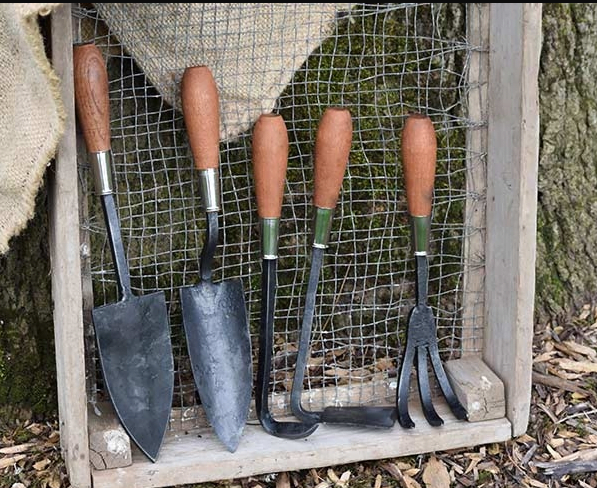
You should store the trowel in a cool and dry place to ensure that it doesn’t get affected by moisture. The moisture can make the handle rot or cause rust on the blade. You can use a tool rack to keep it clean and dry.
How to Maintain a Rake

A rake, much like a shovel or trowel, is a ground tool that requires regular cleaning and maintenance. The good thing is that it does not need a lot of work to maintain.
Cleaning
A plastic rake is easy to clean since you will just need to wipe it down. There are no chances of it rotting or developing rust and makes it easier to take care of. Cleaning a metal rake follows much of the same procedure as the shovel. You might need to be extra careful since the rake has smaller prongs that all need to be cleaned better.
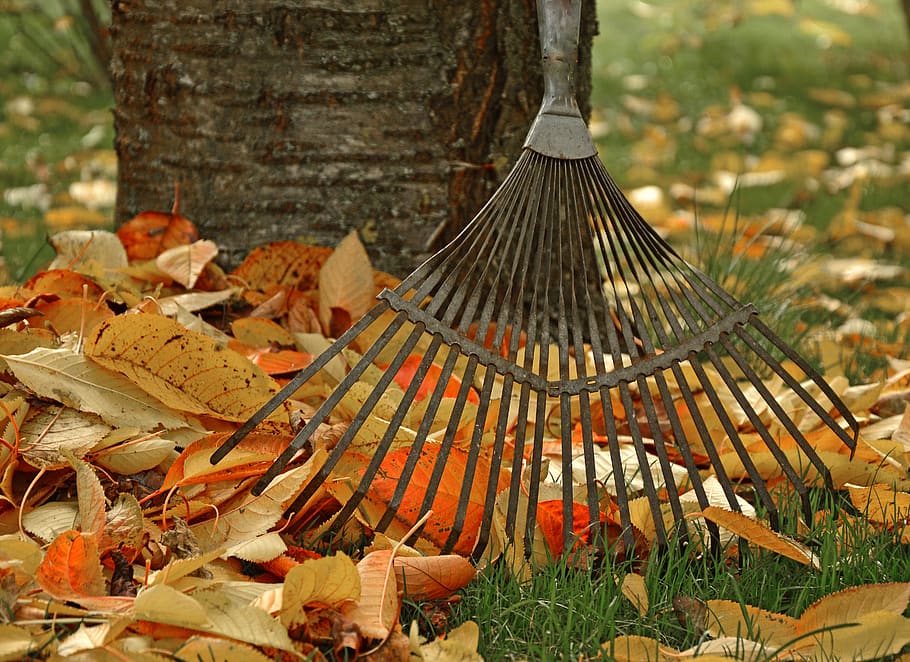
Use the bucket and preferably running water to make sure you remove the loose dirt. Scrub it to remove fixed dirt. Do not soak the handle on water because doing that might cause it to swell and rot. The metal part can form rust if exposed to a lot of water.
Removing rust
Metal parts of a rake can develop rust easily. You will need to remove the rust to make sure it doesn't ruin the rake. Removing the rust will also prolong the rake's life. To remove the rust, rub it off with sandpaper. Use it gently so that you don't remove the metal part or wear it down. This will limit the damage that can be caused by rust. When you're done removing the rust you can apply lubricant or paint to keep the rust at bay.
Oiling
Occasionally oiling the rake will benefit it. You can rub the steel or metal part with a general-purpose tool oil. Doing this or painting will help to prevent rust. You can also treat the wooden parts of the rake. You can use boiled linseed oil to do this. You can use soil moisture sensor to detect the moisture content of the soil so you can clean your tool effectively, especially when you use it on damp soil.
Storage
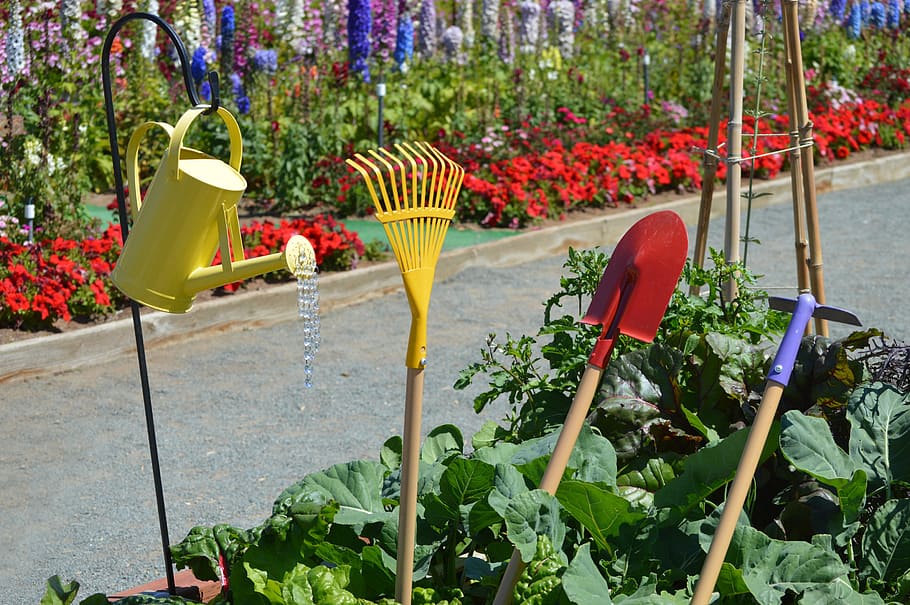
Like all the previous tools, you should store the rake in a shed to protect it from elements. Store it in a dry place. This applies even if the rake is made from plastic. Plastic rakes can become brittle when exposed to a cold or damp environment. Hang it up if you can to ensure the blades don't get blunt. You can also store it with the head upwards if you don't have the material required to hang it up.
Maintaining Secateurs
Secateurs are a gardener’s best friend. These small tools come in handy when dealing with plants. If you are a habitual gardener you know the importance of the secateurs. For all the good the tool brings you, you will need to make sure it is always clean and sharp.

Blunt secateurs can be a pain to work with. This is because they make cutting hard and can cause damage to your plants which can leave them vulnerable to diseases. They also need to be oiled. This is because they can cause sore hands if you prune for a long time. You can know when it is time to oil and clean them if they do not spring back after cutting. This process can work on a glass shear as well.
Cleaning

When cleaning, you need to make sure that you don't expose the secateurs to a lot of water as it might cause rust. Wipe them down with warm soapy water after you finish pruning. Make sure you dry them once you are done washing, whether you will dry with a dry cloth or leave it in a clean and dry place.
Oiling and sharpening
You can then rub it with oil, once they are completely dry, to prevent rusting. This is extra important if you use the secateurs to prune plants with high sap content because the sap is corrosive. You can use a file or a sharpening stone if the blade is blunt. Only light sharpen to ensure you don’t destroy the metallic parts.
If the blades are nicked or bents, you should dismantle it and replace it with a new blade. Start by removing the top nut and undoing the bottom bolt, this will cause them to fall apart. You can now easily lift off the blade. Clean and oil the blades together with the spring. Remove the old blade and replace it with a new one.
Bolt the halves together, fit the spring and you will get sharp, clean secateurs which are as good as new. You can also dip the secateurs in bleach to sterilize if you use them to prune diseased plats or if moving to a different part. Get good, high-quality secateurs that will last you for a long time.
Maintaining a Lawn Edger
Have you ever felt envious after seeing how clean and neat your neighbor’s lawn is? And try as you might you cannot get your lawn to look the same way. Well, that might be because you do not take proper care and maintenance of your edger. Here are some things you can do to ensure your edger stays in perfect shape.
You will need to make sure that the edger's belts are not frayed or cracked. Also, ensure that the recoil rope is okay without extra debris or if it not properly lubricated. Remove it and apply lubrication when needed to make sure it is good for use.
Inspect the oil
Before starting the engine, make sure you check the oil first. You should always make sure you wipe the dipstick off before you check the oil. This is done to prevent dust or dirt from getting into the engine. You should also change the oil frequently. You should do this because an edger works in a dusty environment which can contaminate the engine and cause damage to the edger.
Air Care
Check the air filter regularly because the edger can get contaminated by grass and dirt that is kicked up when operating the engine. Clean the air filter if you see it is contaminated so that you won’t have to replace it completely.
Cleaning
You can use a kitchen spatula to scrape out grass that can be stuck on the edger’s blades. Do not use water or polish to clean your edger. Make sure you have switched it off before you start to clean as it can cause accidents. Disconnect the spark plug if it uses oil or disconnect from the switch if it an electric one. Some of the power dethatchers come with tools that will help you in cleaning the machine. If yours doesn't have the tools, you can use an old rag to wipe the machine down after using it.
Gardening Gloves
Garden gloves are used to hold working tools and prevent the skin from injuries and blisters. In this case it means that they get dirty instead of your hands. To maintain them you need to wash them and dry them. Gloves are made using different materials which dictates that washing them is also different depending on the material. Some gloves require the action of soap and water while others only need to be rinsed using running water.
Wheelbarrow
A wheelbarrow is a very important farm tool. It is the Uber of a gardener. Used to carry other farm tools and equipment needed in the farm. A wheelbarrow is made up of handles, wheel (s) and body. The three parts need different care and maintenance. For instance, after working, wash the body and handles and dry the water to avoid rusting. Apply oil or grease to the wheel for easy movement.
Saw
Saws are vital tools for a gardener. As a gardener building and repairing are some of the tasks you’ll have to undertake. While using timber you need a saw to cut them to the required size. To store and maintain a saw is not a hard task. It is advisable to have a casing where you store it after working. Maintain the sharpness of the teeth and always clean it after use.
Lawn Mower

Lawn mowers helps us in maintaining our yards and courts. To make a lawn mower last long proper maintenance must be taken in to consideration. After use, clean the blades and dry them to avoid rusting. Ensure that the blades remain sharp always. If the lawn mower is gasoline-driven ensure the tank is empty when storing it. This will avoid stale fuel that might damage your engine.
Weeder
A Weeder is an important tool when it comes to maintaining healthy gardens. It could have an extended handle for people who bending is a problem. Most of the Weeders have a metallic structure and a wooden handle. For the wooden handle clean it using a wet cloth. The metallic structure can rust if not taken care of. After using it, clean and dry it then store it.
Garden Scissors
They fall under the category of hand tools and are often misused by making them cut what they shouldn’t. This makes them prone to wear. On the other hand maintaining a garden scissors is very easy. You need some water, piece of cloth, steel wool and lubricating oil. Use the steel wool to scrap off dirt and lubricate the moving parts. It is also advisable to use it for recommended purpose only.
Pruning Shears
These are among the tools that wear out easily and quickly before other farm tools. To have them serve you for a long time, you must use them correctly for the intended use. Clean them, keep the shears as sharp as possible and lubricate them. Scrap of dirt using steel wool and sharpen using a suitable file. Lubricate the moving parts to avoid rust and wear due to friction.
FAQs
Q: Does a soil dethatcher only dethatch or can it aerate the soil too?
A: there are different functions of soil dethatchers. Some of them have rake-like features that can help aerate the soil as well as dethatching too. Others have a scarifier with blades that can aerate, but not as deep as needed.
Q: What kind of tree can a seccateur prune?
A: you can use secateurs to prune most trees, including rose trees. Some trees might be too hard to use secateurs with because they are so thick. You can get pruning shears to prune these types of trees.
Q: How do you use soaker hoses?
A: Soaker hoses are good for use in small gardens that are found on level ground. The way you place a soaker hose and the layout will depend on the type of soil that you have and the plants you have in the garden. You can connect the soaker hose to a water source.
Use the correct kind of spacing for your plants. A soaker hose should not be more than 100feet for it to water plants sufficiently. Make sure the hose isn’t near the stems. Turn on the water source once the hose is connected and turn it off when you are done watering.
Conclusion of How To Maintain Garden Tools
Gardening tools need a lot of proper care and maintenance and it is up to you to show them the care they deserve. These tools are what are going to make sure our gardens stay clean and beautiful at all times. Makes sure you properly clean and oil your tools for you to get the most out of them. You should also make sure the tools are stored in their proper places.
The place they are stored should be clean and dry to prevent any rotting or rusting that can be caused by a damp environment. Keep your tools clean, sharp, and dry and you will see great results in your garden.


